Comments / Questions (32)
![]() Dea wrote:
Dea wrote:
Un'altra cosa, dove si parla del CORPO , alla fine c'è scritto ( = bordo da piegare) in realtà il bordo è "arrotolato" come quello di inizio dello stesso maglione . Ciao
28.11.2025 - 15:28DROPS Design answered:
Buonasera Dea, grazie per la segnalazione: abbiamo corretto il testo. Buon lavoro!
28.11.2025 - 21:54
![]() Dea wrote:
Dea wrote:
Ciao, dove si scrive il RIASSUNTO DEL LAVORO, c'è un errore. Dice "Lavorare il corpo in piano ..." ma è sbagliato si lavora in tondo dall'alto verso il basso come le maniche.
28.11.2025 - 15:26DROPS Design answered:
Buonasera Dea, grazie per la segnalazione: abbiamo corretto il testo. Buon lavoro!
28.11.2025 - 21:54
![]() Nathalie wrote:
Nathalie wrote:
Bonjour, Je ne comprends pas comment faire pour la reprise des manches "Reprendre les 57-57-63-69-69-69 mailles de l'un des fils sur l'aiguille circulaire 4,5 et relever en plus 1 maille dans chacune des 4-6-8-8-10-16 mailles montées sous la manche = 61-63-71-77-79-85 mailles." Doit-on reprendre les 6 mailles en une seule fois sur le 1e rang ou une maille à chaque rang ? Merci
08.11.2025 - 11:36DROPS Design answered:
Bonjour Nathalie, au 1er tour de la manche, vous allez relever 1 maille dans chacune des 6 mailles (2ème taille) montées lors de la division- retrouvez cette étape en images, sur la photo 18B dans cette leçon. Bon tricot!
10.11.2025 - 07:04
![]() Catherine wrote:
Catherine wrote:
Bonjour, quand vous dites qu’il faut continuer les augmentations jusqu’à ce qu’on arrive pour moi à 270 m on ne peut pas continuer avec le même nombres de mailles que le patron il faut augmenter les mailles à chaque tour mais de COMBIEN par exemple au premier rang on doit soir tricoter 7 mailles la deuxième fois 13 mailles donc quand on recommence on doit tricoter 13 mailles puis 19 mailles donc augmenter de 6 mailles à chaque rang? Merci
26.10.2025 - 02:11
![]() Christiane wrote:
Christiane wrote:
Ich möchte diesen Pullover mit Kid Silk grösse L , 2fädig stricken. Brauche ich da wirklich nur 250 g Kid Silber? Mit freundlichen Grüßen Christiane
27.05.2025 - 06:35DROPS Design answered:
Liebe Christiane, ja genau, dh 10 Knäuel Kid-Silk (je 25 g = 250 g), solange Ihre Maschenprobe in der Breite sowie in der Höhe stimmt. Viel Spaß beim Stricken!
27.05.2025 - 09:27
![]() Susanne wrote:
Susanne wrote:
Hallo schönen Tag. Ich habe am Rumpfteil keinen Rollrand gestrickt sondern abgekettet. Problem das Bündchen knickt nach außen um. Wie kann ich das verhindern? LG Susanne
26.05.2025 - 17:59DROPS Design answered:
Liebe Susanne, Sie können den Pullover mit Stecknadeln auf einer geeigneten Unterlage spannen, anfeuchten (z.B. mit einer Sprühflasche für Blumen) und trocknen lassen, danach entfernen Sie die Stecknadeln, dann sollte sich der Rand nicht mehr rollen. Die 2 ersten Videos bei dieser Seite zeigt, wie man (beim Abketten) so eine Rollenkante vermeiden kann, vielleicht kann das auch mal helfen. Viel Spaß beim Stricken!
27.05.2025 - 08:51
![]() Giovanna wrote:
Giovanna wrote:
Hola no encuentro en el patrón donde se explique la parte del canesú haciendo las trenzas y no me cuadran los puntos.
11.03.2025 - 02:09DROPS Design answered:
Hola Giovanna, las trenzas se trabajan según los diagramas A.1 y A.2. En el canesú, después de cambiar a una aguja de 4.5mm y trabajar 4 vueltas, comenzarás a trabajar las trenzas. Trabajarás las trenzas con aumentos según los diagramas. Después trabajarás 5 vueltas con derecho sobre derecho y revés sobre revés, donde las hebras se trabajan de derecho retorcido para que no queden agujeros (no trabajar el diagrama en estas 5 vueltas). Ahora trabajar las trenzas con los diagramas de nuevo. Vas alternando entre 5 vueltas rectas y 1 vuelta con las trenzas en las que se aumentan 24 puntos hasta trabajar la vuelta con trenzas 6-6-7-8-8-8 veces en total.
16.03.2025 - 23:31
![]() Wiebke wrote:
Wiebke wrote:
Hey, bei dem Modell cinnomon crush hänge ich fest: Diese Zunahme habe ich gestrickt: 1Mre,1 Mli, A2, 13 Maschen, A1 etc. Laut Anleitung soll das so weitergehen, aber durch die Zunahmen kann die Maschenanzahl zwischen den Muster A1 und A2 nicht stimmen/ gleichbleiben, bzw das wiederkehrende Muster 1M li, 2Mre , 1M li trifft sich nicht wieder. Bitte um Antwort, danke und Gruß, Wiebke
12.02.2025 - 17:20DROPS Design answered:
Liebe Wiebke, die nächsten Zöpfen werden wie zuvor gestrickt, dh : 1 re, 1 li, *A.2, rechts bis 5 M vor der nächsten linken Maschen übrig sind, A.1, 1 li, 1 re, 1 li*, von * bis* wiederholen, es sind so immer mehr Maschen zwischen den Zöpfe und A.1/A.2 sind beidseitig von (1 li, 1 re, 1 li) gestrickt. Viel Spaß beim Stricken!
13.02.2025 - 09:30
![]() Monique Lestang wrote:
Monique Lestang wrote:
Je ne comprends pas a quel endroit on dois commencer pour faire la deuxieme torsade du début du nouveau rang et les suivantes. Merci pour vos explications
08.02.2025 - 20:41DROPS Design answered:
Bonjour Mme Lestang, les torsades doivent être tricotées de part et d'autre des 3 mailles des raglans, autrement dit, avant et/ou après (1 m end, 1 m env, 1 m end). Bon tricot!
10.02.2025 - 12:18
![]() Lia wrote:
Lia wrote:
Knit 1, purl 1, A.2, knit 7, A.1, purl 1, knit 2, purl 1, A.2, knit 13-13-16-16-22-22, A.1, purl 1, knit 2, purl 1, A.2, knit 7, A.1, purl 1, knit 2, purl 1, A.2, knit 13-13-16-16-22-22, A.1, 1 purl, knit 1. One round Work 5 rounds with knit over knit and purl over purl, knit yarn overs in A.1 and A.2 twisted. Five rounds Do we work 5 rounds of k/p/yo twisted after working 1 round of top pattern above then move to next step or work 5 rounds of the top pattern above?
06.02.2025 - 23:06
Cinnamon Crush#cinnamoncrushsweater |
|||||||
 |
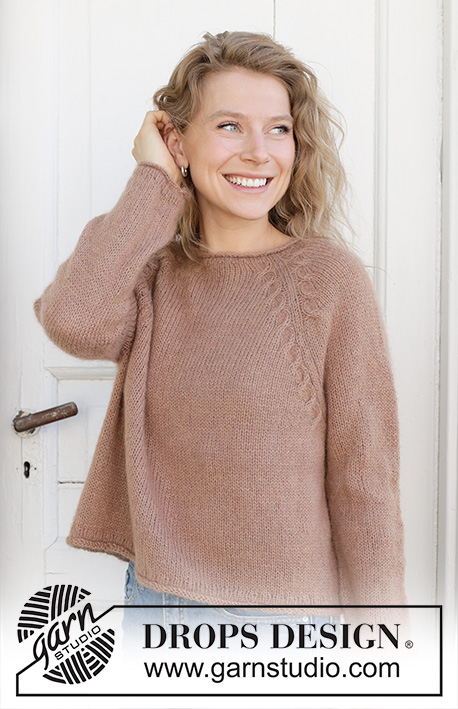 |
||||||
Knitted jumper in DROPS Alpaca and DROPS Kid-Silk. Piece is knitted top down with raglan, cables and rolling edges. Size: S - XXXL
DROPS 255-7 |
|||||||
|
---------------------------------------------------------- EXPLANATION FOR THE PATTERN: ---------------------------------------------------------- PATTERN: See diagrams A.1 and A.2. DECREASE TIP: Decrease 1 stitch on each side of marker thread as follows: Work until 3 stitches remain before marker thread and knit 2 together, knit 2 (marker thread is in the middle of these 2 stitches), slip 1 stitch knitwise, knit 1, pass slipped stitch over stitch worked (= 2 stitches decreased). ---------------------------------------------------------- START THE PIECE HERE: ---------------------------------------------------------- JUMPER - SHORT OVERVIEW OF THE PIECE: In this pattern needles of different length have been used, begin with fitting length for number of stitches and switch as needed. Work neck edge and yoke in the round on circular needle from right shoulder back, and work top down. When yoke is done, divide piece for body and sleeves. Work body down wards in the round on circular needle while putting the sleeves aside. Then work sleeves downwards in the round on needle. NECK EDGE: Cast on 96-96-102-102-114-114 stitches on circular needle size 3.5 mm with 1 strand DROPS Alpaca and 1 strand DROPS Kid-Silk (= 2 strands). Beginning of round is at right shoulder at the back. Knit 4 rounds (= rolling edge), then work rib as follows: Knit 1, * purl 1, knit 2 *, work from *-* until 2 stitches remain, purl 1 and knit 1. Work 4 rounds rib as explained above. YOKE: Insert 1 marker after the first 35-35-36-36-39-39 stitches on round (= approx. mid front), measures piece from this marker. Switch to circular needle size 4.5 mm and work as follows: Knit 1, purl 1, knit 17 (= sleeve), purl 1, knit 2, purl 1, knit 23-23-26-26-32-32 (= front piece), purl 1, knit 2, purl 1, knit 17 (= sleeve), purl 1, knit 2, purl 1, knit 23-23-26-26-32-32 (= back piece), purl 1, knit 1. Work 4 rounds in total like this. Then work as follows: Knit 1, purl 1, A.2, knit 7, A.1, purl 1, knit 2, purl 1, A.2, knit 13-13-16-16-22-22, A.1, purl 1, knit 2, purl 1, A.2, knit 7, A.1, purl 1, knit 2, purl 1, A.2, knit 13-13-16-16-22-22, A.1, 1 purl, knit 1. When this round has been worked, 3 stitches have been increased in each cable (24 stitches increased in total on round) = 120-120-126-126-138-138 stitches. Work 5 rounds with knit over knit and purl over purl, knit yarn overs in A.1 and A.2 twisted. Remember to follow the knitting tension! Then work as follows: Knit 1, purl 1, A.2, knit 13, A.1, purl 1, knit 2, purl 1, A.2, knit 19-19-22-22-28-28, A.1, purl 1, knit 2, purl 1, A.2, knit 13, A.1, purl 1, knit 2, purl 1, A.2, knit 19-19-22-22-28-28, A.1, 1 purl, knit 1. When this round has been worked, 3 stitches have been increased in each cable (24 stitches increased in total on round) = 144-144-150-150-162-162 stitches. Work 5 rounds with knit over knit and purl over purl, knit yarn overs in A.1 and A.2 twisted. Continue pattern and increase this way until cable has been done 6-6-7-8-8-8 times in total, there are 240-240-270-294-306-306 stitches on needle. Then continue with cables and increases on front piece and back piece but increases on sleeves are now done, work stocking stitch over these stitches (1 purl + 2 knit + 1 purl in every transition between body and sleeves continues as before). Continue increase until cable has been done 10-11-11-13-13-14 times in total on body (and 6-6-7-8-8-8 times on sleeves), there are now 288-300-318-354-366-378 stitches on round. Work 3 rounds with pattern as before , without cable. Piece measures approx. 25-28-28-33-33-35 cm, measured from marker after neck edge. DIVIDING FOR BODY AND SLEEVES: AT THE SAME TIME as next round is worked divide yoke for body and sleeves as follows: Slip the first 57-57-63-69-69-69 stitches on a thread for sleeve, cast on 4-6-8-8-10-16 new stitches on needle (= in the side mid under sleeve), work 87-93-96-108-114-120 stitches in stocking stitch (= front piece), slip the next 57-57-63-69-69-69 stitches on a thread for sleeve, cast on 4-6-8-8-10-16 new stitches on needle (= in the side mid under sleeve), and work the last 87-93-96-108-114-120 stitches in stocking stitch (= back piece). Work body and sleeves separately and beginning of round is in the transition between body and sleeve. BODY: = 182-198-208-232-248-272 stitches. Work in stocking stitch as before until piece measures 46-48-50-52-54-56 cm from marker mid front. Switch to circular needle size 3.5 mm. Work rib (= knit 2/purl 1) while AT THE SAME TIME on first round increasing 1-0-2-2-1-1 stitches evenly = 183-198-210-234-249-273 stitches. Work 4 rounds with rib, then knit 4 rounds (= rolling edge). Cast off with circular needle size 4.5 mm. Jumper measures 48-50-52-54-56-58 cm from marker mid front and approx. 54-56-58-60-62-64 cm from the top of shoulder. SLEEVES: Slip 57-57-63-69-69-69 sleeve stitches from one thread on to circular needle size 4.5 mm and pick in addition up 1 stitch in each of the 4-6-8-8-10-16 stitches cast on under sleeve = 61-63-71-77-79-85 stitches. Insert 1 marker thread in the middle of the 4-6-8-8-10-16 new stitches under sleeve - round begins at the marker thread. Work in stocking stitch in the round on needle - AT THE SAME TIME when sleeve measures 3 cm from division, decrease mid under sleeve – read DECREASE TIP and decrease as follows: Decrease 2 stitches every 5-5-3½-2½-2½-2 cm 7-7-10-12-12-14 times in total = 47-49-51-53-55-57 stitches. Work until sleeve measures 40-38-38-34-33-32 cm from division. Switch to circular needle size 3.5 mm. Work 4 rounds with rounds rib (= knit 1/purl 1), on first round increase 1 stitch on needle = 48-50-52-54-56-58 stitches. Then knit 4 rounds. Cast off. Sleeve measures 42-40-40-36-35-34 cm in total from division. |
|||||||
Diagram explanations |
|||||||
|
|||||||
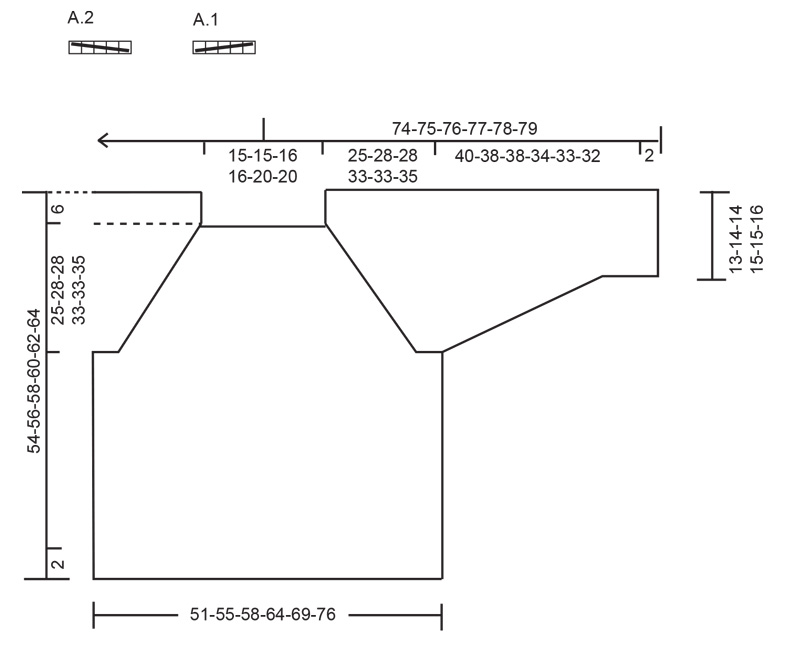 |
|||||||
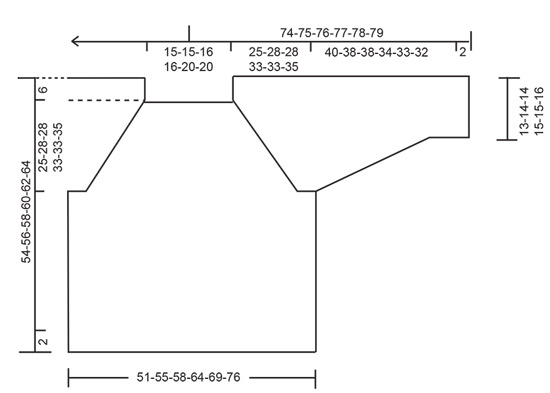 |
|||||||
Have you finished this pattern?Tag your pictures with #dropspattern #cinnamoncrushsweater or submit them to the #dropsfan gallery. Do you need help with this pattern?You'll find 26 tutorial videos, a Comments/Questions area and more by visiting the pattern on garnstudio.com. © 1982-2025 DROPS Design A/S. We reserve all rights. This document, including all its sub-sections, has copyrights. Read more about what you can do with our patterns at the bottom of each pattern on our site. |
|||||||







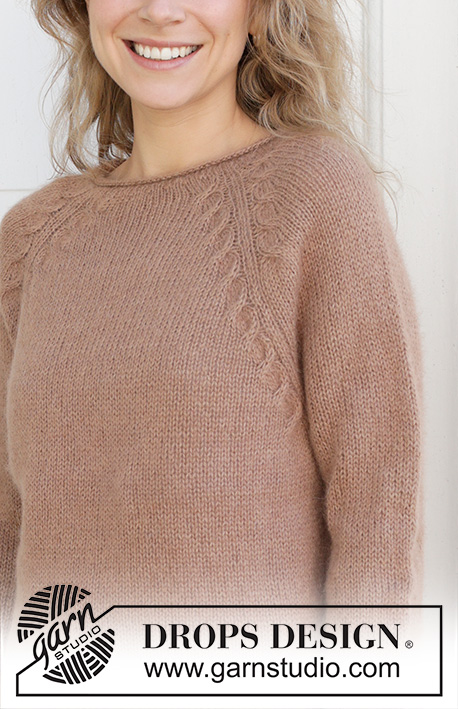
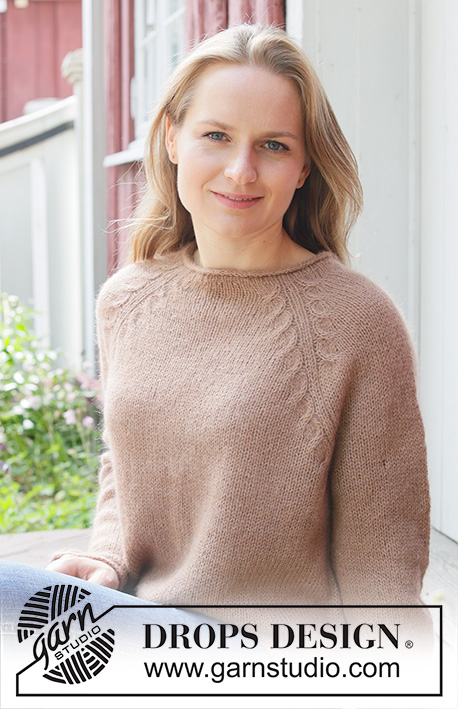

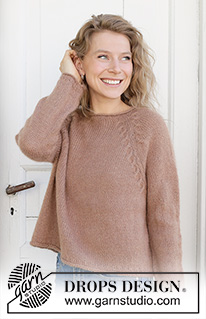
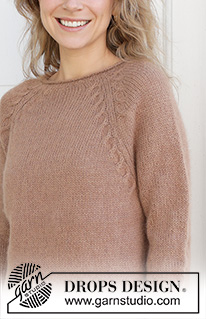
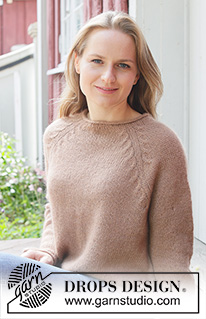

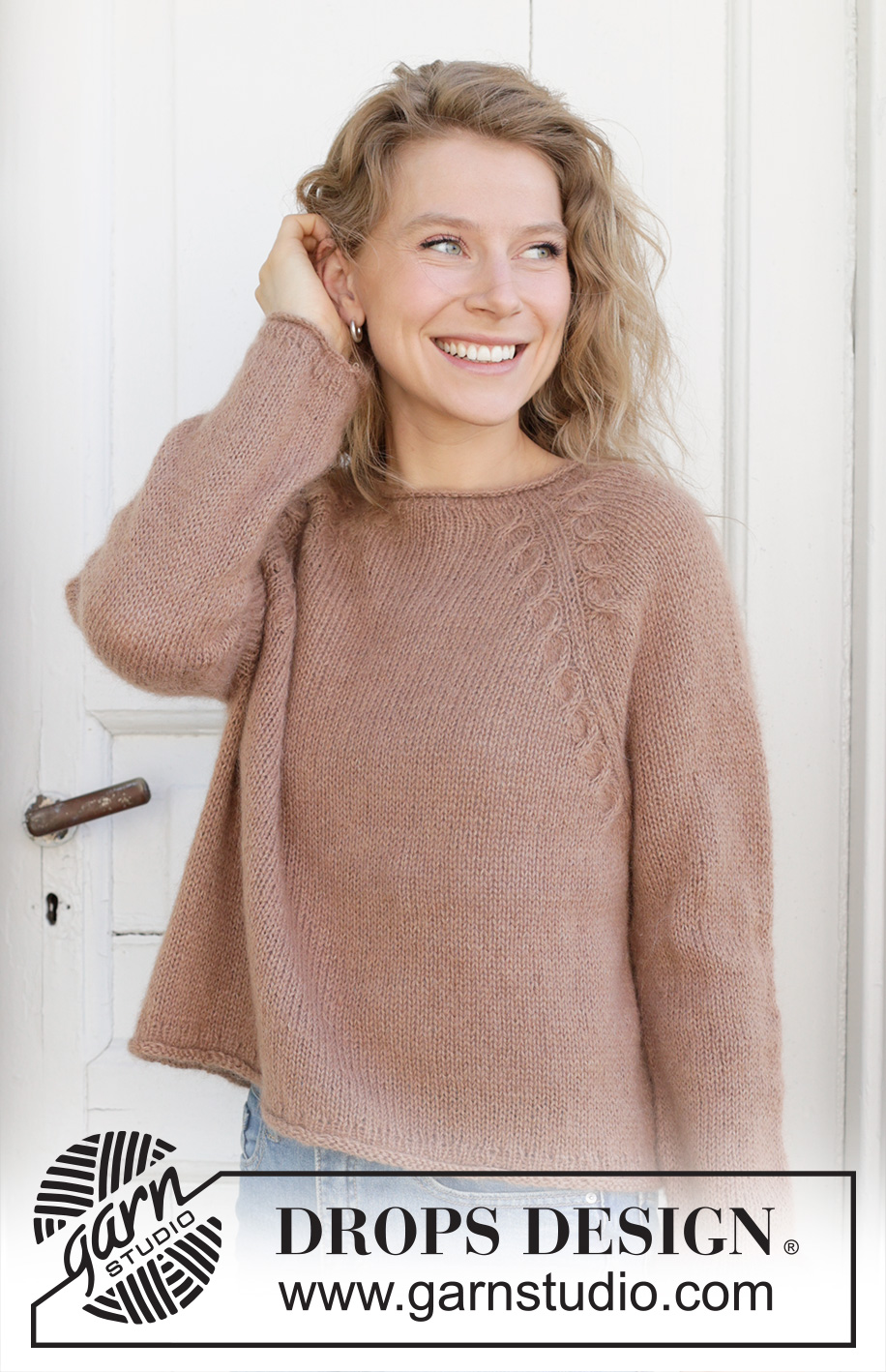
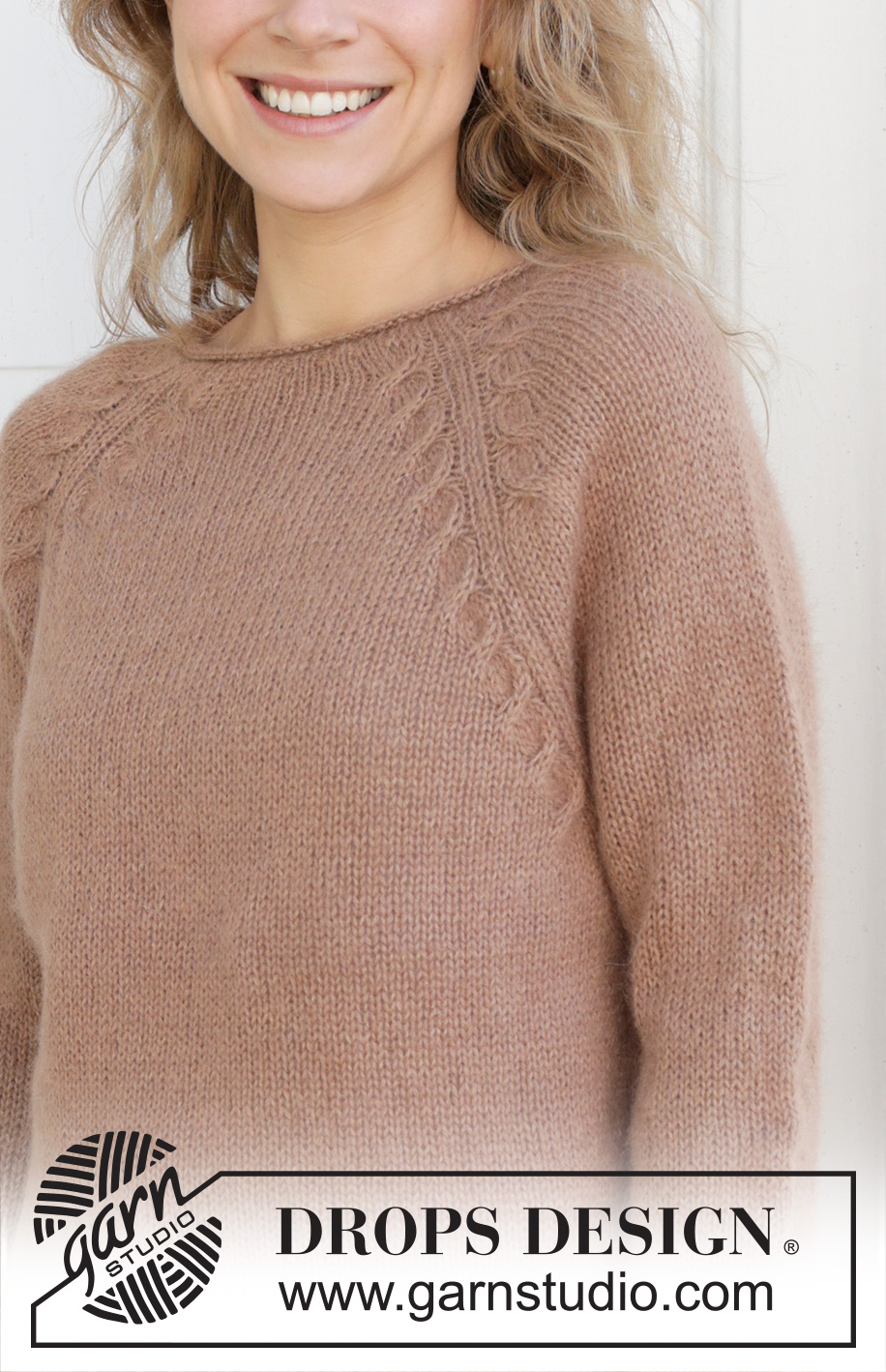
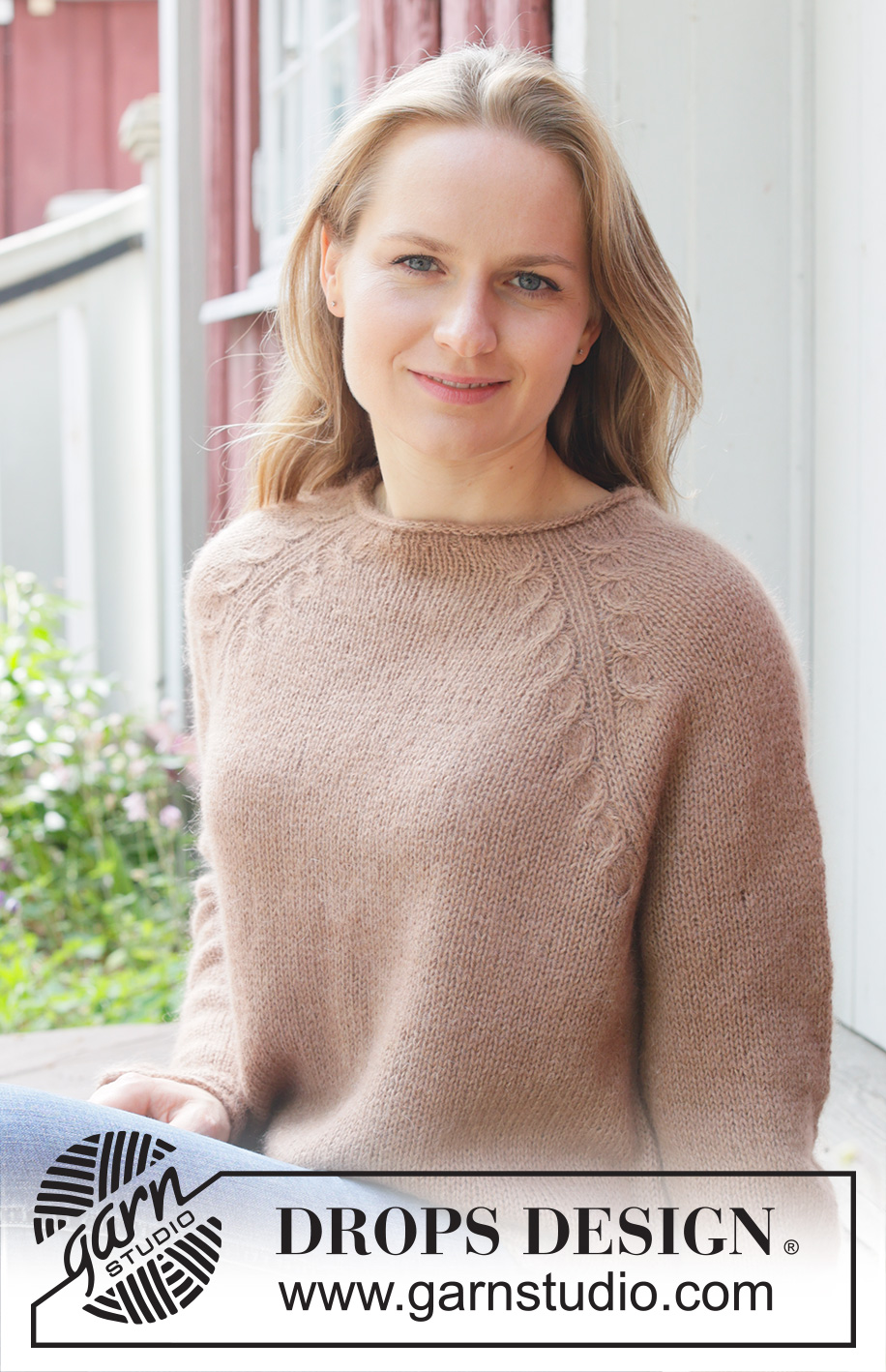




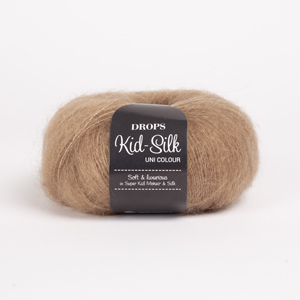

















































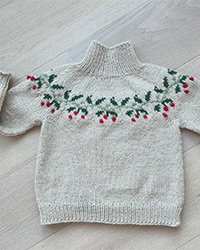
Post a comment to pattern DROPS 255-7
We would love to hear what you have to say about this pattern!
If you want to leave a question, please make sure you select the correct category in the form below, to speed up the answering process. Required fields are marked *.